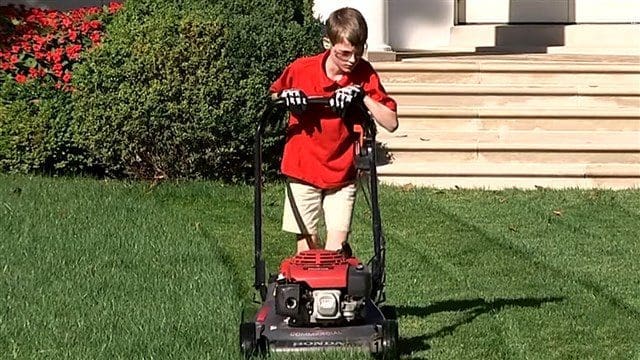By Maddy Rohr, K-State Research and Extension news service
Manhattan, KS — While opinions vary on how high to mow the home’s lawn as the fall temperatures lower, Kansas State University horticulture expert Ward Upham shares the science behind why certain species of grass should be kept short in the cold temperatures.
He said winter tolerance differs among warm-season and cool-season grasses, but both benefit from healthy maintenance practices, including fertilizing, watering and mowing during the spring, summer and fall.
“Cold tolerance is improved by increasing the health of the plants going into the winter, and healthy plants are a result of a sound management program,” Upham said.
The recommended lawn height (in inches) for homeowners in Kansas is:
- Tall fescue: 2.5-3.5
- Kentucky bluegrass: 2-3
- Buffalo grass: 2-3
- Bermudagrass: 1-2
- Zoysiagrass: 1-2
“The lawn will benefit more from continuing to mow at the recommended height than from trying to gain some insulation against winter cold by allowing it to grow tall,” Upham said.
Some variability in the recommended lawn height is beneficial to certain grasses throughout the year.
“For example, it is a good practice to mow warm-season grasses at the higher end of recommended heights during late summer and early fall because this practice should help them store more carbohydrate reserves for the winter, and it may reduce the incidence of certain cool-weather diseases,” he said.
Upham and his colleagues in K-State’s Department of Horticulture and Natural Resources produce a weekly Horticulture Newsletter with tips for maintaining home landscapes and gardens. The newsletter is available to view online or can be delivered by email each week.
Interested persons can also send their garden and yard-related questions to Upham at wupham@ksu.edu, or contact your local K-State Research and Extension office.













